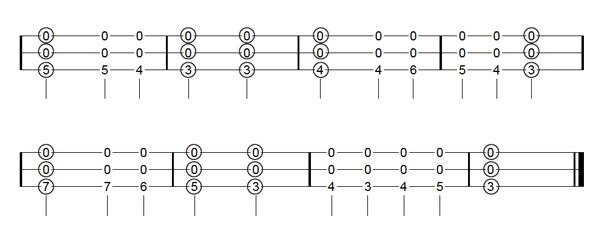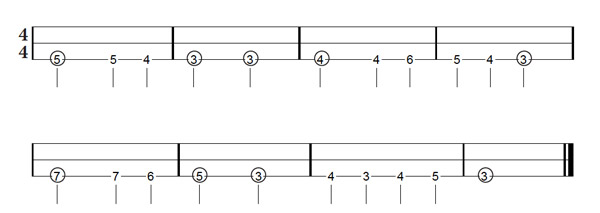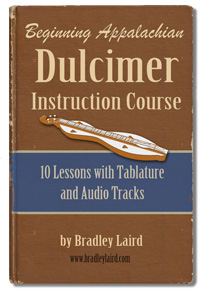|
HOME | FREE BEGINNING DULCIMER LESSONS | FREE VIDEO LESSON BRAD'S DULCIMER EBOOK | FREE DULCIMER TABS | FREE DULCIMER CHORD CHARTS |
||
FREE BLUEGRASS BANJO LESSONS Bradley Laird's Free Bluegrass Banjo Lesson site is located here! FREE CLAWHAMMER BANJO LESSONS Bradley Laird's Free Clawhammer Banjo site is located here! FREE MANDOLIN LESSONS Bradley Laird's Free Mandolin Lesson site is located here! FREE BLUEGRASS GUITAR LESSONS Bradley Laird's Free Guitar Lesson site is located here! FREE JAM SESSION SURVIVAL KIT Free Chord Progression Cheat Sheets
©2015 Bradley Laird |
FREE
DULCIMER LESSONS - by Bradley Laird
HOW TO READ DULCIMER TABLATURE Here are some examples of some dulcimer tablature (tab for short). Don’t worry about playing any of this now. I am presenting it simply to point out the various features of written tablature. The basic structure of the tablature is the staff consisting of 3 horizontal lines. These represent the strings of the dulcimer with the bass string on top, the middle string in the middle and the melody string at the bottom..
Time passes from left to right. Each bock of time is called a measure and measures are divided by vertical lines called measure lines or bar lines. All measures last the same length of time. You will notice that the bass string and the middle string only have note heads in the form of zeros which indicates they are played “open” or “unfretted.” Later, throughout most of this course there will be no markings on the bass and middle strings since it will be assumed that you will play them all “open.” Notes which are stacked up are all played at the same time with a brush of the pick or right hand. (More about how to do this will be presented later.) If you are familiar with standard music notation you will see that rhythms are indicated in the same way by using stems and various other markings. (More on this later as needed.) Here is an “uncluttered” version of the same music shown without marking all of the drone strings. It is much easier to read. Just remember that whenever you play a note on the melody string you will also brush the drone strings at the same time.
This time, at the very beginning of the tablature, you will notice the “4/4” marking. Just like standard music notation, the top number tells you that there are 4 beats or counts in each measure. The bottom number tells you which “time value” note is equal to one beat. In this case the “4” on the bottom tells you that a “quarter note” gets one beat. Rather than go through every possible rhythm and time value I will simply describe what is shown above. Later, as new rhythms and note types appear, I will explain them as needed. Remember that this section is meant to “familiarize” you with tablature.
Got it! Take me to free lesson 6... After you try these free lessons you might also enjoy my complete downloadable PDF eBook which teaches 10 songs in 3 different tunings using strums and a little finger picking too. It comes with 17 MP3 tracks too! Fun stuff! You can read about it here. Back to Index of Free Dulcimer Lessons
| |

 Notes are written on the staff using numbers. A zero indicates that a particular string is played “open” or unfretted. The numbers indicate which fret is used to produce a note.
Notes are written on the staff using numbers. A zero indicates that a particular string is played “open” or unfretted. The numbers indicate which fret is used to produce a note.

